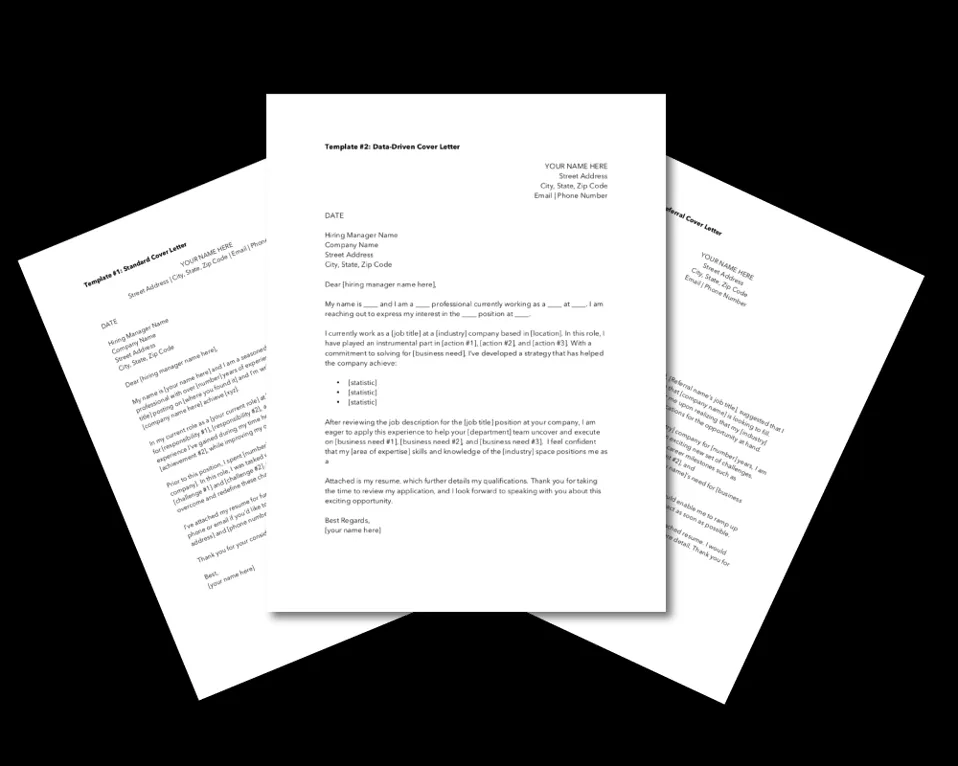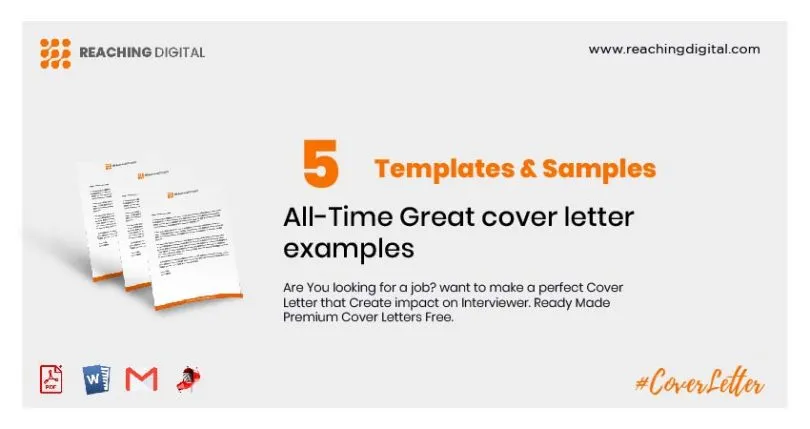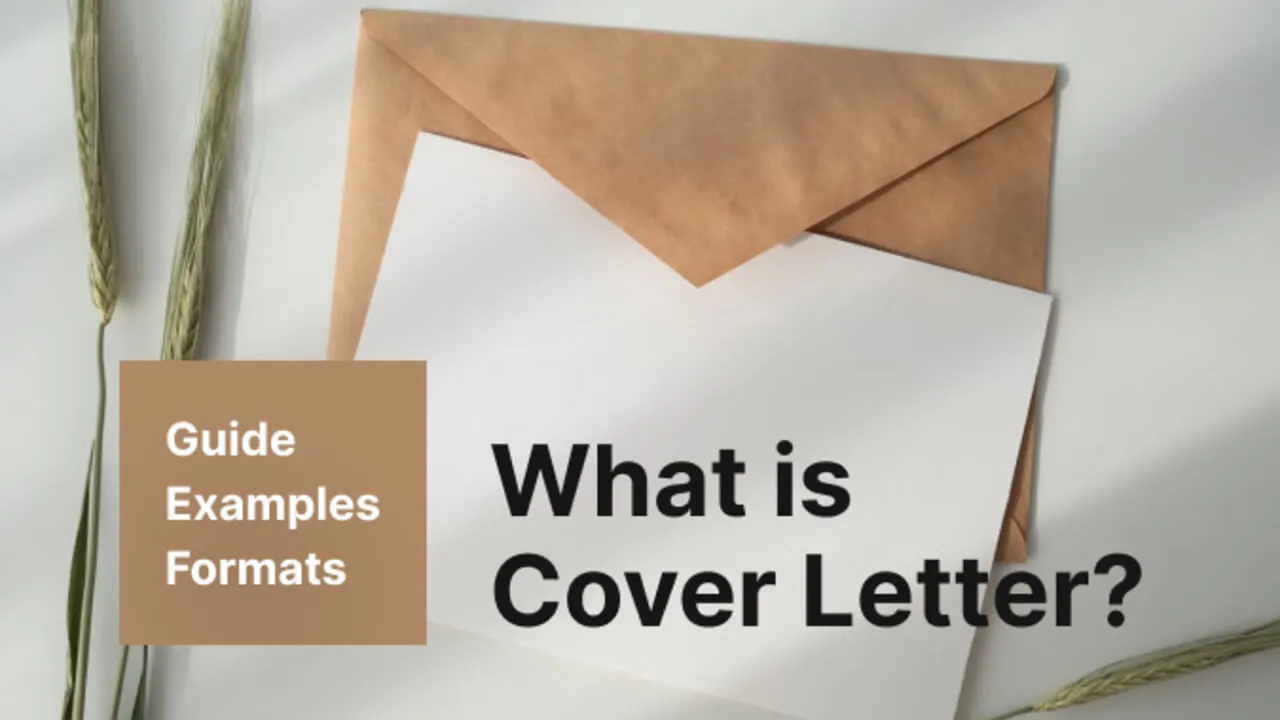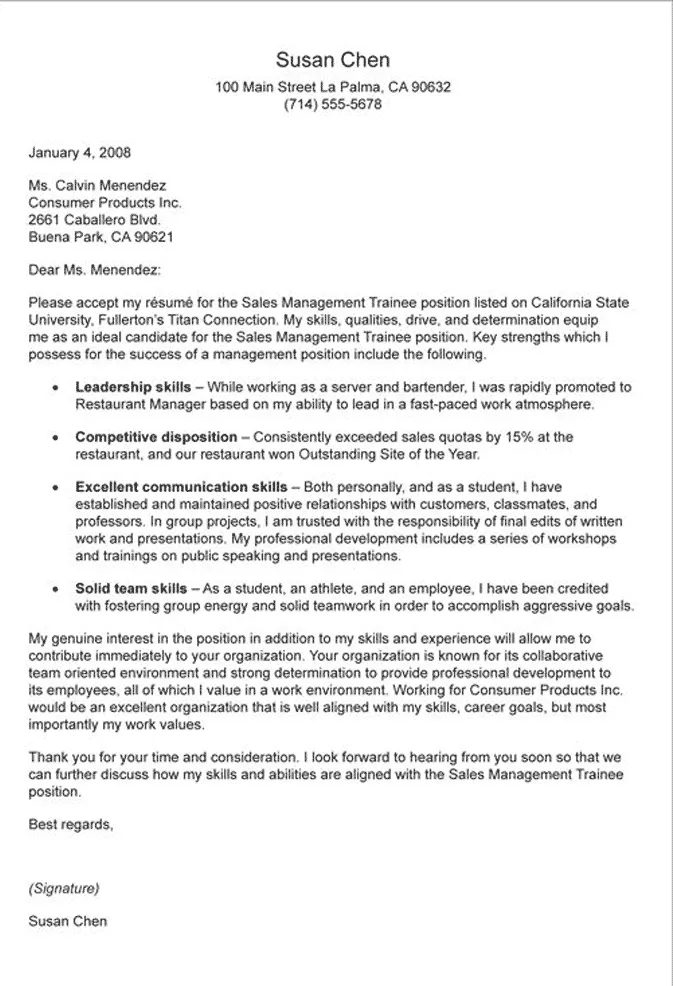Why Cover Letters Are Still Important
In an era dominated by online applications and digital resumes, it’s easy to question the relevance of cover letters. However, a well-crafted cover letter remains a powerful tool in your job search arsenal. It serves as your personal introduction, providing context to your resume and highlighting the key skills and experiences that make you the ideal candidate. Cover letters offer you the opportunity to showcase your personality, writing abilities, and genuine interest in the position, elements often missing in a standard resume. They allow you to expand on your qualifications, explain any gaps in your employment history, and demonstrate your understanding of the company and the role. In essence, a cover letter can be the deciding factor in whether your application makes it to the interview stage. It’s your chance to make a strong first impression and set yourself apart from other applicants who might have similar qualifications on paper. Ignoring this crucial step could mean missing out on opportunities.
Key Components of a Perfect Cover Letter
A perfect cover letter isn’t just a rehash of your resume; it’s a carefully constructed document designed to capture the reader’s attention and persuade them to learn more about you. Several key components must be present for a cover letter to be effective. This includes a professional header with your contact information, a compelling opening paragraph that grabs the reader’s attention, body paragraphs that highlight relevant skills and experiences, and a strong closing paragraph that reiterates your interest and includes a call to action. The language used should be professional, clear, and tailored to the specific job and company. Moreover, the formatting should be clean and easy to read, ensuring that your letter is visually appealing. Proofreading is crucial to avoid errors that could undermine your credibility. Finally, customizing the letter for each application demonstrates that you’ve done your research and genuinely care about the opportunity.
Header and Contact Information

Your header sets the professional tone of your cover letter, making it easy for the hiring manager to contact you. Start with your full name, followed by your phone number, email address, and LinkedIn profile URL, if you have one. The contact information should be prominently displayed, usually at the top left or right corner of the page. It’s also common practice to include the date and the recipient’s information, such as the hiring manager’s name (if known), their title, and the company’s address. Ensuring the accuracy of this information is crucial; a single typo can prevent the employer from reaching you. Maintain a consistent style with the same font and font size as the rest of your letter to give a polished look. This detail, though seemingly minor, reflects your attention to detail and professionalism, qualities that employers value.
The Opening Paragraph: Grab Attention
The opening paragraph is your hook. It’s the first thing a hiring manager reads, so it needs to be engaging and make them want to read more. Instead of a generic greeting, try to express your enthusiasm for the role or the company. If someone referred you, mentioning the connection is a great way to establish credibility. Briefly state the position you’re applying for and how you learned about it. Then, in one or two sentences, highlight your most relevant skills or experiences that align with the job requirements. This shows the hiring manager that you’ve done your research and understand what the company is looking for. Avoid clichés and generic statements. Instead, make your opening paragraph specific and personalized to stand out. An excellent opening creates curiosity and encourages the reader to delve into the rest of your letter.
Body Paragraphs Highlighting Skills and Experience
The body paragraphs form the core of your cover letter, where you elaborate on your skills and experience. Use these paragraphs to show, not just tell, the hiring manager why you’re a good fit for the job. Focus on the key requirements outlined in the job description and provide specific examples of how your past accomplishments align with those requirements. Quantify your achievements whenever possible, using numbers to demonstrate the impact of your work. Use the STAR method (Situation, Task, Action, Result) to structure your examples, providing context, explaining your role, detailing your actions, and highlighting the outcome. Keep the paragraphs concise and focused, ensuring each sentence contributes to the overall narrative. Tailor your content to each specific job, and avoid using the same cover letter for every application. The goal is to convince the reader that your skills, experience, and personality align perfectly with the job.
Showcasing Achievements with Examples

Showcasing your achievements is a crucial element in persuading a hiring manager. Instead of simply listing your responsibilities, focus on what you accomplished in previous roles. Use concrete examples to illustrate how you have contributed to past successes. For example, instead of stating “Managed social media accounts,” you could write “Increased social media engagement by 30% in six months by implementing targeted content strategies.” Include quantifiable results such as increased sales, improved customer satisfaction, or successful project completion. The STAR method is exceptionally useful here. For each accomplishment, describe the situation, explain the task you faced, detail the actions you took, and highlight the positive results. This approach offers concrete evidence of your abilities and demonstrates your value to the employer. By providing tangible examples, you offer a clear picture of how you can contribute to their organization.
Tailoring Your Cover Letter to the Job Description
One of the most important aspects of writing an effective cover letter is tailoring it to each specific job description. Generic cover letters are easily spotted and often discarded. Instead, carefully analyze the job description and identify the key skills, qualifications, and experiences the employer is seeking. Then, customize your letter to address these specific requirements. Highlight the relevant skills and experiences from your resume that align with the job description. Use the same keywords and phrases that the employer uses in their description. Research the company and the role to understand their values and culture, then reflect that understanding in your letter. Showing you’ve done your homework demonstrates your genuine interest in the position and your willingness to go the extra mile. This personalized approach greatly increases the likelihood that your application will stand out and receive serious consideration.
The Closing Paragraph: Call to Action
The closing paragraph is your final opportunity to make a lasting impression. After summarizing your key qualifications and reiterating your interest, it’s essential to include a clear call to action. This tells the hiring manager what you want them to do next. Express your enthusiasm for the opportunity and state your availability for an interview. Provide your contact information again to make it easy for the hiring manager to reach you. Thank the reader for their time and consideration. Avoid clichés such as “I look forward to hearing from you.” Instead, use a more direct and proactive phrase like, “I am eager to discuss how my skills and experience can benefit your team, and I am available for an interview at your earliest convenience.” A well-crafted call to action leaves the reader with a positive impression and encourages them to take the next step in the hiring process.
Formatting and Design Tips for Cover Letters

The formatting and design of your cover letter can significantly impact its readability and overall impression. Choose a professional and easy-to-read font such as Arial, Calibri, or Times New Roman, and keep the font size between 10 and 12 points. Use single spacing and left-aligned text, with a blank line between paragraphs to create visual clarity. Maintain consistent margins of at least one inch on all sides. Keep the letter concise, aiming for no more than one page. Break up large blocks of text with bullet points and headings to make it easy for the reader to scan. The use of bolding or italics should be done sparingly to emphasize key points. Ensure the layout is clean and uncluttered to enhance readability. A well-formatted cover letter demonstrates professionalism and attention to detail, which can set you apart from other candidates.
Font Choice and Readability
The font choice is a critical element of your cover letter’s design, greatly affecting its readability and professional appearance. Opt for a simple, professional font that is easy on the eyes. Commonly recommended fonts include Arial, Calibri, Times New Roman, and Helvetica. Avoid overly stylized or decorative fonts, as these can be distracting and difficult to read, especially for hiring managers who may be reviewing numerous applications. Maintain a consistent font throughout the letter, using a size between 10 and 12 points. Ensure that the font is legible when printed, as some hiring managers might prefer to review a hard copy. The choice of font sends a subtle message about your attention to detail and professionalism. A font that’s easy to read and well-formatted demonstrates that you value the reader’s time and present yourself in a polished manner.
Proofreading and Editing Your Cover Letter
Proofreading and editing are essential steps to ensure your cover letter is free of errors. Even a minor typo or grammatical mistake can undermine your credibility and create a negative impression. After you finish writing, take a break and then review your letter with a fresh perspective. Carefully check for spelling errors, grammatical mistakes, and punctuation errors. Ensure that the formatting is consistent and that all information is accurate. Read the letter aloud to catch any awkward phrasing or unclear sentences. It can also be helpful to ask a friend, family member, or career advisor to review your letter. They might spot errors you missed or offer valuable suggestions for improvement. A polished, error-free cover letter demonstrates your attention to detail and commitment to excellence, traits that are highly valued by employers.
Avoiding Common Cover Letter Mistakes

Several common mistakes can derail your cover letter’s effectiveness. Avoid generic greetings like “To Whom It May Concern;” always address the hiring manager by name whenever possible. Don’t simply restate your resume; instead, expand on your qualifications and provide context. Refrain from using jargon or overly technical language that the reader might not understand. Avoid exaggerating your skills or making false claims, as this can damage your credibility. Don’t include information that is irrelevant to the job or the company. Make sure the letter is free of errors, as typos and grammatical mistakes create a negative impression. Avoid a passive tone; instead, use strong action verbs and express your enthusiasm for the role. Finally, tailor each letter to the specific job and company; a generic cover letter will not make a good impression. By avoiding these common pitfalls, you increase your chances of creating a compelling cover letter that grabs the reader’s attention.
Examples of Strong Cover Letter Phrases
Using strong, impactful phrases can significantly enhance your cover letter. Instead of merely stating what you did, use phrases that convey your accomplishments and enthusiasm. Consider the following examples: “Successfully managed,” “Developed and implemented,” “Increased sales by,” “Streamlined processes,” “Led a team of,” “Collaborated with cross-functional teams,” “Exceeded targets by,” and “Proven ability to.” Use action verbs to describe your achievements, such as “achieved,” “created,” “designed,” “implemented,” and “improved.” For example, instead of writing “responsible for,” write “Spearheaded the development of.” Express your interest in the role and company by using phrases like “I am eager to contribute,” “I am particularly drawn to,” and “I am excited about the opportunity to.” These phrases help you present yourself as a proactive and enthusiastic candidate, making your cover letter more memorable and persuasive.
Action Verbs to Use in Your Cover Letter
Action verbs are essential in making your cover letter more dynamic and compelling. They help showcase your accomplishments and demonstrate what you can bring to the role. Instead of using passive language, use strong action verbs to highlight your skills and experiences. Some examples include: “achieved,” “managed,” “developed,” “created,” “implemented,” “improved,” “led,” “coordinated,” “streamlined,” “increased,” “reduced,” “negotiated,” “analyzed,” “designed,” “organized,” and “trained.” Use these verbs to describe your achievements, focusing on what you accomplished in previous roles. For instance, instead of writing “I was responsible for,” write “Managed the project.” By choosing strong action verbs, you make your cover letter more engaging and provide a clear picture of your capabilities, showing the hiring manager how you can contribute to the company’s success. This creates a more powerful and memorable impression.
Different Cover Letter Types and When to Use Them

Understanding the different types of cover letters and when to use them is crucial for job applications. The most common types include the traditional cover letter, the skills-based cover letter, and the creative cover letter. Each type serves a different purpose and is best suited for specific situations. The traditional cover letter is the most standard format, suitable for most job applications. It focuses on your work history, skills, and how they align with the job requirements. The skills-based cover letter emphasizes your key abilities rather than your chronological work history; this is particularly useful if you have gaps in your employment or are changing careers. A creative cover letter is less formal and can be a good option for creative industries. Choosing the appropriate type of cover letter demonstrates your understanding of the role and the company and increases the chances of making a strong first impression.
The Traditional Cover Letter
The traditional cover letter is the standard format for most job applications, and it’s a safe and effective choice for various industries. It typically follows a structured format, beginning with your contact information and the recipient’s details. The opening paragraph should state the position you’re applying for and how you learned about it. The body paragraphs highlight your relevant skills and experiences, using specific examples and quantifiable achievements to show how you align with the job requirements. It emphasizes your work history in chronological order, showcasing your career progression and experience. In the closing paragraph, express your enthusiasm for the role and include a call to action. The traditional cover letter is well-suited for most professions, demonstrating your professionalism and qualifications. It’s a solid choice when the job description clearly outlines the requirements and expectations, and your experience closely matches those needs. Adhering to a well-structured format ensures clarity and professionalism in your application.
The Skills-Based Cover Letter
The skills-based cover letter is an excellent choice when you want to highlight your skills rather than your work history. This is particularly beneficial if you have gaps in your employment, are changing careers, or have limited experience in the traditional sense. The focus is on your key competencies and how they relate to the job requirements. In the opening paragraph, state the position you’re applying for, and then, in the body paragraphs, emphasize your most relevant skills. Instead of describing your work history chronologically, use examples to illustrate how you’ve utilized these skills to achieve results. This format allows you to showcase your abilities regardless of your previous job titles or industry experience. Tailor the skills you highlight to match the job description. Include a closing paragraph that reiterates your interest and provides a call to action. The skills-based cover letter is ideal for situations where your skills are more important than your specific employment history.
The Creative Cover Letter

The creative cover letter offers a chance to showcase your personality and writing style, making it ideal for roles in creative fields such as marketing, design, and writing. Unlike the traditional format, a creative cover letter allows for more flexibility in design and structure. You can experiment with different layouts, fonts, and even visual elements. However, it’s essential to ensure the letter is still professional and easy to read. The content should demonstrate your ability to think outside the box and showcase your unique talents. This could involve telling a story, using humor, or highlighting your passions and interests. When writing a creative cover letter, always consider the company’s culture and the nature of the job. It’s crucial to tailor the letter to the specific role and industry. Proofread carefully, and make sure your creative approach aligns with the company’s brand. Use this type when you want to make a memorable first impression and stand out from the crowd.
